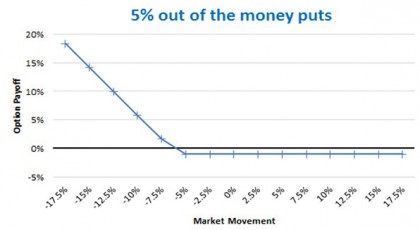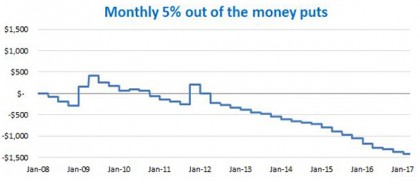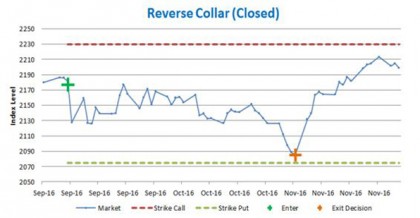If you look around the world we face unprecedented risks. The Trump Presidency, North Korea’s nuclear ambitions, rising interest rates, and fully valued markets are all spot fires that could engulf portfolios.
These risks can seriously dent investor’s and client’s life savings, and damage their ability to reach important financial goals. The stakes are high.
Savvy investors and advisers are now actively looking to insure against those portfolio risks by using natural hedges like diversification and defensive assets.
Unfortunately, as you can see in the chart below, two big market events in recent memory – the 2000 tech wreck and the 2008 global financial crisis (GFC) – highlighted the limitations of diversification. Bonds were meant to provide a ballast against falling equities. But just when we needed protection the most, both fell at the same time (positive correlation).
Source: Bloomberg, AMP Capital 2017
It was as if we’d bought insurance for our house and the insurer didn’t pay up.
In this risky market environment, investors and advisers need to look to other forms of portfolio insurance and protection, particularly options.
Some investors and advisers think options are risky; but options reduce portfolio risk, like insurance on your house. The key is to use them in a dynamic, cost-effective way that minimises performance drag, like only buying insurance only when a fire or storm starts to threaten your house and when insurance premiums are cheap.
A simple contract
Options may seem complex, but basically they are a contract that is sold by an option ‘writer’ to an option ‘holder’. That contract gives the holder the right (but not obligation) to buy or sell a security, such as shares, at an agreed price on or before a specified date.
A ‘call’ option gives the holder the right to buy the underlying security; a ‘put’ option gives the holder the right to sell the underlying security.
You can limit your trading to options themselves; you don’t have to trade the underlying security themselves. If the underlying shares fall, for example, your put options become more valuable.
Of course, like any insurance, options cost. The holder must pay the option seller a ‘premium’.
Protection from puts
Put options are a great way to provide protection against market falls.
Buying protective put options are like buying classic insurance – you pay a premium upfront and it pays a positive return when the market declines.

Source: Bloomberg, AMP Capital 2017
The put contract illustrated in the chart above has a strike 5 per cent below the market level. If the market falls 10 per cent, you will get a 6 per cent return. The premium is 1.5 per cent. If the market goes up or falls less than 5 per cent, the option will expire worthless and you lose the premium.
The cost of options
We buy insurance on our house all the time. Can’t you just hold protective puts all the time to protect portfolios?
Unfortunately, because options cost money (the premium you pay to the option seller) they drag on performance.

Source: Bloomberg, AMP Capital 2017
In the chart above, you can see the impact on a notional $10,000 of rolling put options at 5 per cent below the money on the S&P500 in the US. There were positive payoffs to the left towards the GFC. But, generally, they are a drag on performance.
Most investors and clients are in accumulation phase. They can take short-term volatility, but they can’t take this drag on performance.
Prudent protection
The good news is that by using options selectively and dynamically, you can get portfolio protection without major performance drag.
There are three ways to use options cost-effectively.
1. When it’s time
The first method is to only use options when your process or methodology says to reduce risk. For example, AMP Capital uses a Sentiment Score for its dynamic asset allocation (DAA) process, which informs our use of options.
2. When they’re cheap
Another is to buy options when they are cheap. Premiums you pay for options change depending on what the market expects volatility will be. If the market expects higher volatility in the future, people buy more options which pushes their price up. The VIX index measures the implied level of volatility. If the VIX is low, options are cheap.
3. Other markets
Another way to keep costs low is to buy options in countries outside the US. Put options are expensive in the US. Regulations give insurance companies a big incentive to buy put options on market exposures, mostly the S&P500. That pushes up the price of put options. So you should look at other markets, such as Europe and China, to buy protective puts.
Successful protection against Presidential uncertainty
At AMP Capital we successfully use options to protect against worrying market events.
In September 2016, we were particularly concerned about the US Presidential election triggering a market correction. Our DAA process also showed added risks from record low yields and high valuations in the S&P500.
So for relevant portfolios we entered into a more complex options strategy, called a ‘reverse collar’ to protect against a possible correction.*
Source: Bloomberg, AMP Capital 2017
As shown in the chart above, we entered the position in early September, a good time. The market continued to be volatile along with the polling of the candidates. The market fell almost 5 per cent (close to the maximum payoff) and we exited the position when the majority of the potential gain from the strategy had been captured.
This example also highlights one of our key rules: each option must have pre-defined exit triggers so we crystallise the benefit (or loss) in a disciplined manner.
Incorporating options into strategies and decisions
Portfolios that hold different types of assets, such as multi-asset funds, obviously have an inherent level of risk protection because they have a diversified range of assets.
But as we’ve seen, diversification doesn’t always deliver portfolio protection, particularly during extreme market events. Sometimes we need to turn to other forms of insurance and protection, such as options.
With the world facing significant geopolitical, economic and market risks, advisers and investors should be considering incorporating options as an insurance strategy.
Advisers and investors should also be seeking out investment managers who have the skills to use options in a cost-effective and disciplined manner so they can maximise protection and minimise performance drag.
*A reverse collar is selling (short/writing) a put option and buying (long) the call option on the same index. At the same time, to cover any negative market movement and therefore the short put, we sell the same face value of the contracts short, with futures contracts in the S&P500 market.
A reverse collar takes advantage of skew in the US options market. Because of the previously mentioned insurance regulations, puts are more expensive than calls. The skew means we get protection (positive payoff) for the first 5 per cent of the market decline. And we only give up around 2.3 per cent of the upside if the market rallies.
Source: AMP Capital 14 September 2017
Author: Heath Palos, Assistant Portfolio Manager, Multi-Asset Group





